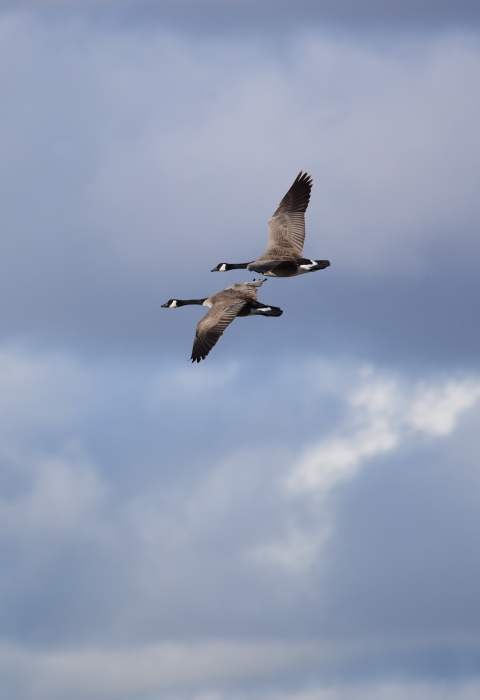What We Do
The grasslands on Florence Lake National Wildlife Refuge are managed using prescribed fire, grazing, haying, and planting of native grasses on previously farmed fields. Small infestations of invasive exotic plants are also managed.
Management and Conservation
Wildlife managers use a variety of tools to manage habitat for many species of wildlife.
Prescribed Burning
Controlled burns are often called prescribed burns because wildlife managers write a careful prescription of the weather conditions, equipment, and people necessary to safely conduct a burn that will have the desired ecological effect. Fire is used to help wildlife and wildlife habitat by stimulating prairie plant growth, increasing soil nutrients, and setting back the invading trees and other species not adapted to life on the prairie.
Prairie animals are also adapted to fire. Some go underground during the fire. Others simply fly or run away from the fire. Sometimes, birds lose their nests to fire, but native grassland species have an adaptation for this - they quickly respond by building a new nest and laying a new clutch of eggs. While there is some short-term loss to some nests or animals, these same species depend on fire for their survival, since many prairie plants and animals cannot survive long, once shrubs or trees take over their grassland habitat.
Rotational Livestock Grazing
Refuge managers work together with local ranchers to mimic natural disturbances that were once caused by large herds of free-ranging bison and elk on the prairie. Through livestock grazing, invasive cool-season grasses and other invasive plants can be stressed, which favors native grasses and forbs such as western wheatgrass, green needlegrass, blue grama, little bluestem, purple coneflowers, goldenrods, and low growing shrubs. Grazing can greatly influence the structure structure
Something temporarily or permanently constructed, built, or placed; and constructed of natural or manufactured parts including, but not limited to, a building, shed, cabin, porch, bridge, walkway, stair steps, sign, landing, platform, dock, rack, fence, telecommunication device, antennae, fish cleaning table, satellite dish/mount, or well head.
Learn more about structure and diversity of grassland communities.
Water Level Management
To foster desired plant growth, water levels on wetlands are carefully monitored and controlled with water control structures. Management objectives focus on providing habitat and food for nesting, rearing, and migrating birds. An especially important plant, sago pondweed, provides shoots and tubers as a food source for birds. The invertebrates these plants support are also an important food source for waterfowl, shorebirds, and many other wildlife species, especially when nurturing broods.
Invasive Species Control
Invasive species are plants and animals that are not native to an area, and can cause economic or environmental harm. One of the largest threats to public lands in the United States, next to habitat loss, is the invasion of invasive plant and animal species. If left unchecked, invasive species invasive species
An invasive species is any plant or animal that has spread or been introduced into a new area where they are, or could, cause harm to the environment, economy, or human, animal, or plant health. Their unwelcome presence can destroy ecosystems and cost millions of dollars.
Learn more about invasive species can alter habitat and water quality.
Refuge managers use livestock grazing, burning, chemical application and insects to control invasive plants such as smooth bromegrass, Kentucky bluegrass, Canada thistle, absinth wormwood, leafy spurge, Russian olive, and Siberian elm trees.
Our Services
There are no facilities or amenities for the public on Florence Lake National Wildlife Refuge.
Laws and Regulations
The National Wildlife Refuge System, the only system of Federal lands devoted specifically to wildlife, is a network of diverse and strategically located habitats. More than 565 national wildlife refuges and 38 wetland management districts teem with millions of migratory birds. They serve as havens for hundreds of endangered species and host a variety of other plants and animals. Over 39 million people visit units of the National Wildlife Refuge System each year to enjoy a wide range of recreational opportunities. To maintain this system, the passage and creation of laws and regulations, such as the National Wildlife Refuge System Improvement Act, ensures a strong and singular wildlife conservation mission.
